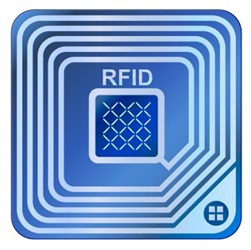How A Best-Of-Breed Approach Makes For The Perfect RFID Partner
By Jeroen Struycken, Vice President of Business Development at Nedap Retail

Choosing an RFID partner can be difficult, especially if you’re new to RFID technology and unsure what to expect from your partnership. RFID is fast becoming a must-have, proving vital to keep track of every unique item movement and creating stock visibility throughout the supply chain, and providing customers with the best omni-channel experience. More often than not, it can be a case of a one-stop-shop vs. best-of-breed approach.
So, what does that mean when it comes to RFID inventory management solutions providers? Should you better go with a single vendor, a company that provides labels, hardware, and software, plus customizing services that fulfil all your needs as a one-stop shop, or opt for a best-of-breed approach?
Best-Of-Breed Vs. Single-Vendor
A best-of-breed approach allows businesses to mix and match specialized technology services from multiple vendors. In contrast, a single-vendor approach is when a business uses several products from the same vendor.
Single-vendor or one-stop-shop solutions are often seen as more appealing because they can be implemented across an entire organization at the same time. However, this can lead to employees having to rely primarily on these products, despite them not always being the best solution for every application (e.g., labels, hardware, or software). This can mean resorting to components, programs, and databases that aren’t the right fit or sometimes are no longer supported by the vendor.
The single-vendor approach also can make businesses more vulnerable to threats, with a challenge with one product able to affect the entire suite. In addition to this, it may have an impact on an organization’s ability to innovate as they wait for vendors to release new versions and features for their systems.
At first glance, opting for a best-of-breed approach can seem complicated, as it involves partnering with multiple vendors that will all have their own way of working with businesses. But when done successfully, organizations can combine all of their best-of-breed technology into a fully integrated and flexible system that will be of huge benefit in the long run.
Best-Of-Breed Technology: The Pros And Cons
How can an organization decide whether the best-of-breed approach is right for them and what are the areas they need to consider?
Best-of-breed technology offers expert solutions that businesses can handpick based on the functions and features they need. That way, they can feel confident that the tools they’re using are the best and most relevant to their organization. This is also linked to rapid innovation, where modern technology is used to grow with market demands and offers more flexibility than a regular full suite solution.
Having the right solution in place allows organizations to start small and expand their technology stack as their business grows. Best-of-breed is a great choice for those looking for a suitable solution for both long and short-term projects without the need to commit to an expensive suite of products while also offering tighter security and increased productivity. Additionally, the flexibility of this way of working makes it easier to adopt than full product suites.
However, best-of-breed technology won’t be the right solution for everyone and is sometimes seen as complex due to multiple systems, databases, and vendors being in place. This can be daunting for those who are not IT-savvy and would need extensive support and consulting throughout implementation and beyond.
Integration Is Key – Powered By Apis
As businesses in many industries seek to develop customized technology stacks that meet the needs of their employees and customers, the best-of-breed approach is picking up momentum. However, to operate efficiently and get the most out of best-of-breed tools, communication is vital. This helps to minimize and simplify any challenges as well as improve ROI.
It is essential to have a robust strategy that includes API-based data integration. This can enable businesses to make the most of a best-of-breed approach in 2022 and beyond, and there is no denying that working with a single vendor has its perks. However, this can often be restrictive and costly due to a lack of flexibility.
When considering what makes the perfect RFID partnership, brands should look for label experts, hardware pros, and RFID software that seamlessly integrates with ERP and third-party applications like a smart fitting room. That way, when it comes to selecting a single or best-of-breed vendor, end users can weigh up the benefits of a fully integrated system so that their supply chains can see greater opportunities, better user productivity, and rapid innovation.
About The Author
After obtaining his MSc in Mechanical Engineering at the Delft Technical University in The Netherlands, Jeroen soon made the step from industrial manufacturing challenges to commercial roles. Since 2003 he has been working on introducing Loss Prevention analytics and store inventory management systems based on RFID to the retail market. After a wide variety of leadership positions within Nedap, he currently focuses on developing the market for supply chain and omni-channel services based on RFID with globally renowned retailers.
